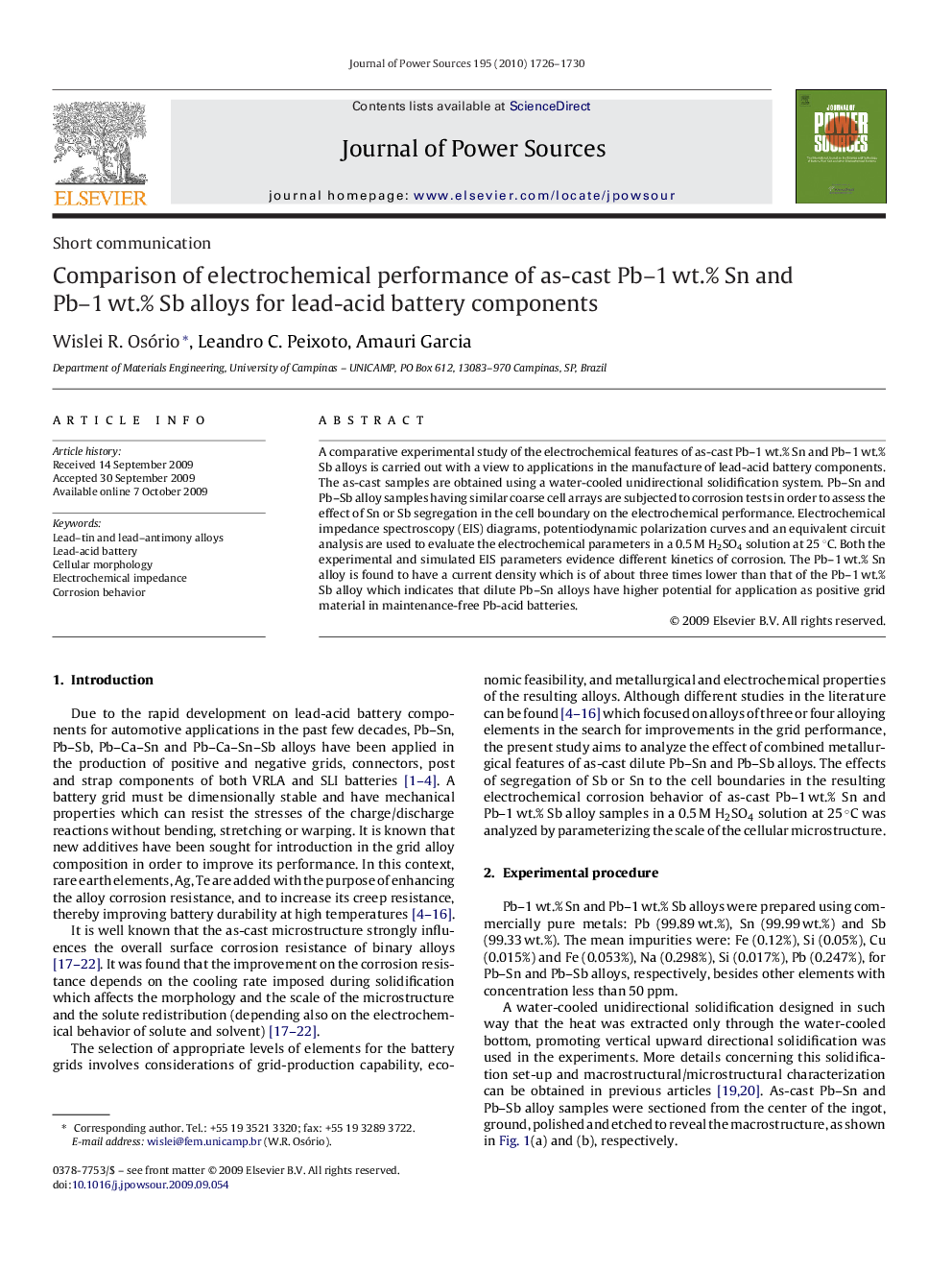| Article ID | Journal | Published Year | Pages | File Type |
|---|---|---|---|---|
| 1289694 | Journal of Power Sources | 2010 | 5 Pages |
A comparative experimental study of the electrochemical features of as-cast Pb–1 wt.% Sn and Pb–1 wt.% Sb alloys is carried out with a view to applications in the manufacture of lead-acid battery components. The as-cast samples are obtained using a water-cooled unidirectional solidification system. Pb–Sn and Pb–Sb alloy samples having similar coarse cell arrays are subjected to corrosion tests in order to assess the effect of Sn or Sb segregation in the cell boundary on the electrochemical performance. Electrochemical impedance spectroscopy (EIS) diagrams, potentiodynamic polarization curves and an equivalent circuit analysis are used to evaluate the electrochemical parameters in a 0.5 M H2SO4 solution at 25 °C. Both the experimental and simulated EIS parameters evidence different kinetics of corrosion. The Pb–1 wt.% Sn alloy is found to have a current density which is of about three times lower than that of the Pb–1 wt.% Sb alloy which indicates that dilute Pb–Sn alloys have higher potential for application as positive grid material in maintenance-free Pb-acid batteries.
